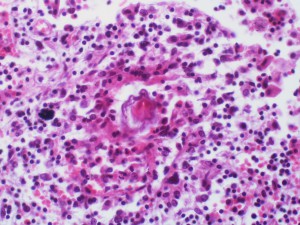
It is one of the great success stories of the last 25 years that research has developed effective and simple treatments for patients suffering from many of the infectious diseases associated with poverty. However, if the late 20th century was about developing treatments, the early 21st has become about how to deliver them efficiently.
Public health systems around the world are notoriously weak, and developing a simple community intervention lacks the glamour of discovering a groundbreaking new vaccine. In his recent interview in Biome, José Belizán, Editor-in-Chief of Reproductive Health, pointed out that only six percent of the biomedical research budget in his native Argentina is dedicated to public health research.
However, awareness is growing, and with it comes the support of the major funders, governments and non-governmental organisations. The World Health Organisation, the Gates Foundation and the UK Government’s Department for International Development have all expressed interest in this area.
Disease control and public health programs are increasingly advocating community-based delivery strategies and interventions. These depend, to a large degree, on trained community volunteers and health workers. Research, such as the Alive & Thrive initiative supported by the Gates Foundation, is already demonstrating the effectiveness of these interventions for hygiene, nutrition and maternal care.
Community-based delivery platforms like this have the advantage of ensuring sustainability, but they also have the capacity to start to integrate neglected tropical disease (NTD) prevention with existing malaria, tuberculosis, and HIV/AIDS programs, for which more sophisticated healthcare delivery systems already exist.
Recognizing the link between community-based programs and disease prevention
In light of this, the journal Infectious Diseases of Poverty is publishing a series, commissioned by the Special Programme on Research and Training in Tropical Diseases and financially supported by the European Union, that provides an overview of infectious diseases of poverty and integrated community-based interventions (CBIs). The series summarizes existing research findings on the effectiveness of community-based interventions for the prevention and control of conditions, including NTDs, and proposes a way forward.
Uniquely, this series of papers evaluates the efficacy of community based projects with respect to actual disease or prevention outcomes. This approach is particularly important, according to Dr Xiao-Nong Zhou, Editor-in-Chief of the journal, because previous studies have tended to focus on the effectiveness of implementing the strategy, rather than looking at its efficacy for disease.
“This series focuses on the efficacy evaluation of the community-based interventions strategy with outcomes of disease prevention,” he says, “a new subject, since previous reviews were more related to process and effectiveness of CBI strategy”.
Commenting on the need for series like this in the current research environment, series author Professor Zulfiqar Bhutta added that:
“The global evidence for the importance of community health workers in delivering key maternal, newborn, child health and nutrition interventions is robust and growing rapidly. These health workers and related programs have been shown to reach marginalized and poor communities, especially those difficult to reach and living in pockets of poverty. The current series of papers now provides additional evidence that these programs and community health workers can also address many other diseases of the impoverished and provide much needed primary care preventive services and commodities.”
However, he also pointed out that this is not a standalone solution, adding that, “to be optimally effective, these programs have to be linked to effective referral services and facilities”.
To get the full picture, you can read all the articles in the series on the journal’s website.

Comments